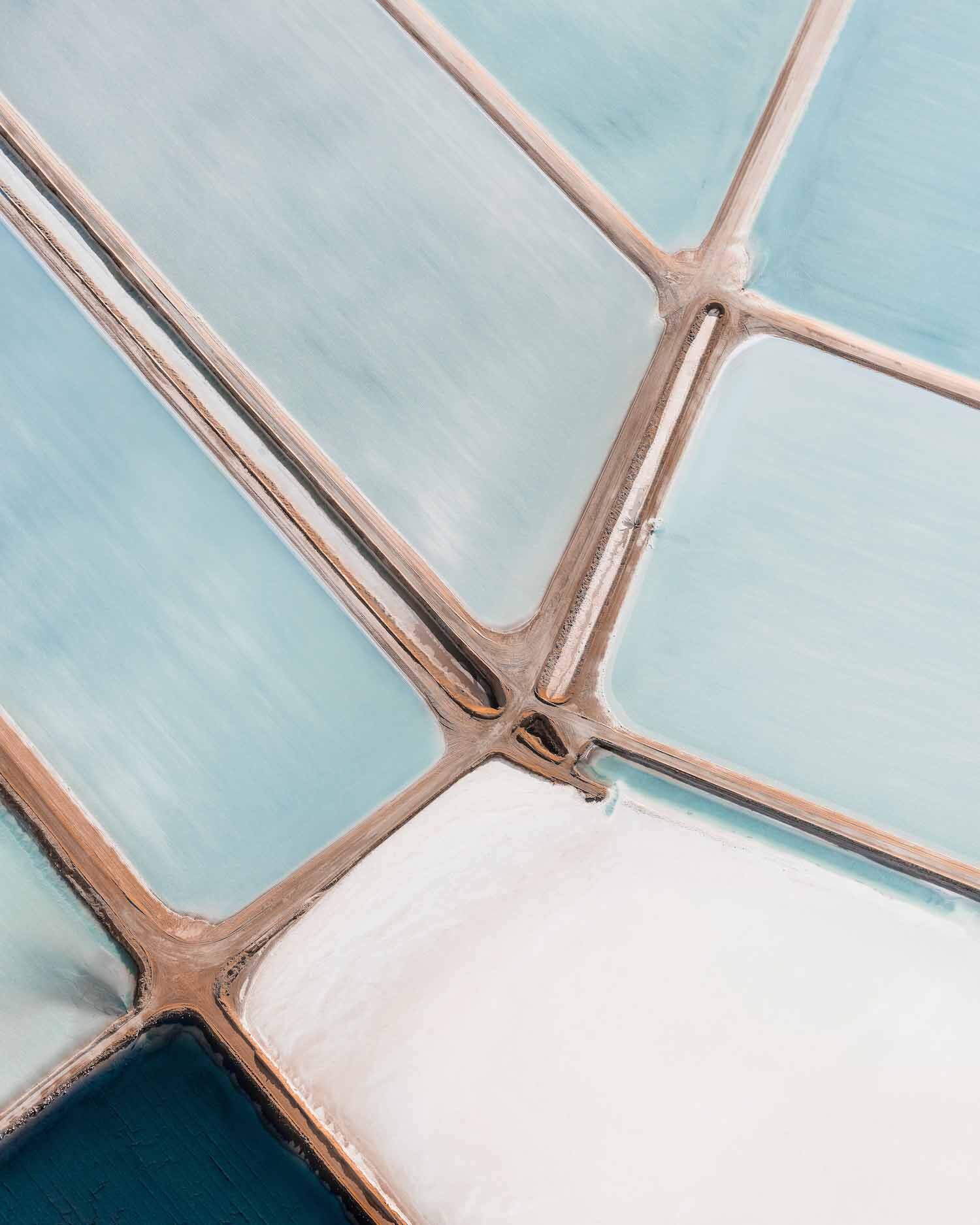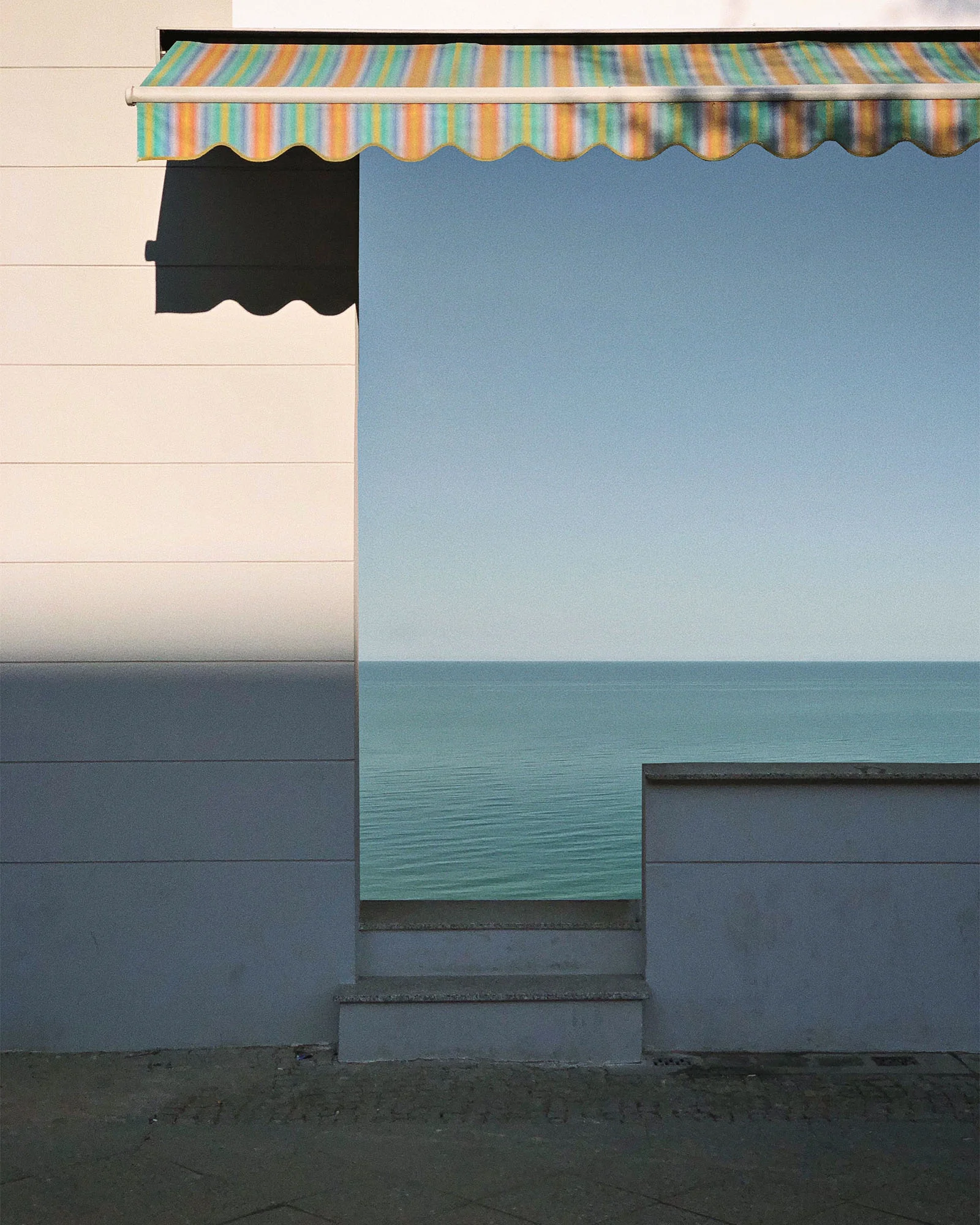A Photographer’s Perspective on the Human Impact of Natural Landscapes
A Photographer’s Perspective on the Human Impact of Natural Landscapes
Tom Hegen’s Aerial Photography Examines the Relationship Between Man and Nature
Name:
Tom Hegen
Words:
Caroline Meeusen
Photography:
Tom Hegen
At first, you might get lost in the textures, colors, and patterns of Tom Hegen’s images, but as you look closer, recognizable landscapes and natural environments emerge. The German photographer and designer is fascinated by the complex relationship between man and nature. Through his lens, he shows the human impact on earth. Focusing on landscapes that have been heavily transformed by human intervention, he shows how extraordinary and defining the human force is that impacts our world.
VISUAL PLEASURE Magazine: Your photography series are mostly of landscapes and from above. How did you come to photographing like this? What gave you the idea?
Tom Hegen: I started off with classic (not to say ‘romantic’) landscape photography but soon realized that those sugarcoated shots do not represent their real environment. I began to question the term ‘landscape’ as known from ‘landscape photography.’ ‘Land’ is a word of Germanic origin and the roots of the suffix ‘-scape’, German ‘-schaffen’ refers to the verb ‘shaping’. So, landscape in the sense of landscaping refers to an activity that modifies the visible features of an area. As a consequence of that, I started seeing landscape photography of documenting places influenced by human rather than landscape photography as showing pure, unspoiled nature.
What exactly do you try to capture with your lens?
I am interested in the concept of the Anthropocene. It is a term used by scientists which theorizes that humans, in recent centuries, have become one of the most important factors influencing the biological, geological, and atmospheric processes on earth. Some of the most significant changes in the Anthropocene include climate change, the ozone hole in the Antarctic, rapidly rising sea levels, and landscape changes caused by river shifts or the degradation of raw materials. In my photography, I explore the origin and scale of that idea to understand the dimensions of man’s intervention in natural spaces and to direct attention toward how humans can take responsibility. Aerial photography is a compelling way to document those interventions because it makes the dimensions of human force on earth visible. I am also fascinated by the abstraction that comes with the change of perspective; seeing something familiar from a new vantage point that you are not used to.
What’s the process of taking your pictures, what’s the technique for shooting from above?
I use various techniques to create my work like from small airplanes, helicopters, with drones or photographing from hot air balloons. I have even done projects from the top of a bridge. For me, it doesn’t make a big difference shooting from an airplane, helicopter or working with a drone. I focus on the single image, the series, and the concept rather than technique.
What do you want your images to evoke?
I want to inspire people to look closer on the sheer impact we have on our environment and ask if and how we could develop on that. If we show more respect for the space in which we live, we’ll hopefully shape it more sustainably in the future. We all need to demonstrate responsibility toward nature, along with more appreciation and more intelligent and creative action. We only have this one earth. That is why we should respect, protect, and preserve it while it is still possible.
How do you try to portray the relationship between humans and nature?
I am trying to document human interference with nature in a radically beautiful way. We are trained to look at the beauty more likely than to something disturbing. At first glance, my photographs are appealing for the eye, but most of them have, at a second glance, something artificial and disturbing.
What was the most amazing place you traveled to for your photography?
Last year, I did a project about the effects of global warming on the Arctic Ice Sheet. I documented the meltwater river and lakes on top of it. When I was approaching this vast landscape by air, I was overwhelmed by its scale and that even when this area is so remote, we still have an impact on it.
How would you describe your work and style yourself?
In my photography, I work with abstraction and aestheticization as a visual language to inspire people and also to offer the viewer a connection to the subject as they need to decode what they are looking at.
What was the most beautiful comment you ever got on your work?
People resonate very positive to my work and give me the feedback that they not only enjoy looking at the photographs but also got stimulated on an informative level. That’s my job and I am very happy when the message comes across.
What landscape/place/event would you still love to photograph and why?
In 2018, I published my first coffee table book HABITAT, which is about human intervention in natural environments. Later this year, I will start working on my second book, which will be around a similar topic.














